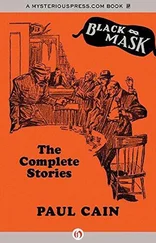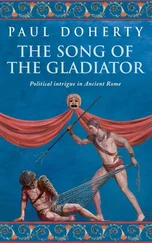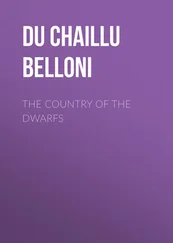He threw the question to the admiral.
“What do you suggest we do, Comrade Admiral?”
“We cure her right here.”
Abrikosov slowly got out of his chair and brandished a short dagger that was hanging on his belt. It was a shiny ceremonial weapon, called kortik in Russian and a dirk in English. This weapon had an ivory handle. It was gold plated. Unsheathing it, the admiral placed its point against Arkashka’s nose.
Arkashka didn’t blink.
“Now, Abramovich, this is the kortik of a Soviet admiral. By this kortik I swear that nothing will stand between my mother and full recovery. You will stay here for as long as it takes to improve her breathing, and I will sit here with you for as long as it takes to make sure that this fine Russian woman walks again.”
With these words, the admiral placed the unsheathed kortik across his knees.
Often you need time to make an irrational family member come to his senses, Arkashka decided.
He must do something, anything, to create an appearance of a therapeutic intervention.
He reached into the bag and produced a glass bottle containing saline solution, connected it to a catheter, and carefully inserted the needle into the woman’s vein. Then he placed the bottle on the table next to the bed, well above the patient.
“Ol’ga Petrovna is severely dehydrated. This should help her for the time being.”
The admiral’s gaze remained focused on the kortik .
“Comrade Admiral, please understand that you called an ambulance. We would be happy to stabilize Ol’ga Petrovna and transport her. This is our job. But we are unable to stay here, because this woman needs to be in a hospital. We cannot give her the hospital care she needs. We need to make a decision.”
He sat down and looked at the admiral, whose face remained placid. Arkashka looked at his watch. Family members frequently threaten doctors. Making good on the threat is something completely different. If this man had any sanity left in him, he would not act on impulse. He would recognize the consequences. He would recognize that killing doctors was still punishable by law, almost certainly, even if they were Jews, even now. Arkashka decided to give the man enough time to decompress. If this didn’t work, nothing would.
Exactly fifteen minutes later, Arkashka looked at his watch again, got up, and, saying nothing, headed toward the door.
“By the honor of a Soviet officer,” said Admiral Abrikosov, rising from the armchair and, before Arkashka reached the door, inserted the kortik in the doctor’s back, then calmly returned to his mother’s bedside.
Arkashka walked into the kitchen, where Spartak was drinking tea served to him by the maid.
“There is a knife in my back,” he said.
* * *
Kogan was on service that night. His notes from that surgery are unusually detailed, even by his standards:
Preoperative Diagnosis:Right hemothorax due to penetrating trauma with exsanguination.
Postoperative Diagnosis:Same with intraoperative death.
Findings:Massive hemothorax with stab wound to the pulmonary hilum primarily affecting the right superior pulmonary vein adjacent and into the pericardium. The wound was inflicted with a ceremonial dagger, 19.5 cm. long. The dagger has an ivory handle bearing the inscription: “To Admiral Abrikosov for bravery and inventiveness in the defense of Leningrad, I. Stalin.”
The hilt of the dagger is cast in gold. On both sides, the hilt is marked with the words: “In Reward.”
Indication for Procedure:This 35-year-old, previously healthy and active ambulance physician presents with marked dyspnea, tachypnea, and hypotension with a blood pressure of 70/40 and heart rate of 160.
An emergency chest X-ray demonstrates a large right-sided pleural effusion coincident with an entry wound just lateral to the spine in the fifth inter space and medial to the posterior axillary line.
The entry wound measures only 1.5 cm. The patient displayed a decorative dagger, which the ambulance attendant had removed at his direction after the patient was stabbed. This event occurred approximately 27 minutes prior to the initiation of the procedure.
Description of Procedure:IV access was obtained and light general anesthesia was administered and deepened as tolerated after ongoing fluid resuscitation. Orotracheal intubation was performed and the patient was placed in the full lateral position. The chest was rapidly prepared with Betadine and a fifth inter-space incision was made anterior to the entry wound.
Several liters of clotted blood were removed rapidly and minimal ventilation was performed in order to rapidly assess the mechanism of injury. Irrigation was used to remove the deeper lying thrombus. The lung parenchyma was essentially spared. Attention was then turned to the hilum.
Inspection of the anterior vessels showed no evidence of pulmonary or bronchial artery injury.
The lung was then reflected medially and an area of posterior thrombus was identified well behind the phrenic nerve.
This area was suspicious for a pulmonary vein injury and was approached as carefully as possible.
A large defect was seen in the right superior pulmonary vein continuing from the pleural space into the pericardium. The pericardium was lacerated inferior to the venous laceration.
Once the defect was visualized, a light 4–0 silk suture line was begun to close the defect. Unfortunately, several minutes were needed to find the suture and while the chest was flooded with irrigation the patient arrested.
An arterial air embolus was suspected. Open chest cardiac massage was begun and the defect was closed with good hemostasis. The pericardium was then widely opened and no further injuries were seen.
Continued resuscitation was performed for another 30 minutes. Despite these measures, the heart continued to fibrillate and a proper rhythm could not be established.
The patient was pronounced dead in the operating room at 5:53 a.m.
The retractor was removed and the incision was closed with interrupted suture.
Kogan’s objective here was to create record, to show who killed his friend and to document the extent of injuries.
If you are a homicide detective, you want notes these good, but you rarely get them.
* * *
Kogan felt pride every time he walked through the entrance of Pervaya Gradskaya. The hospital was built in 1832 at a time of Russia’s great imperial ambitions. It was a grand place with massive columns, a cupola, and two small bell towers rising incongruently but charmingly from the sides of the portico at the main entrance.
Kogan often noted that the building looked even more impressive than Johns Hopkins Hospital in the city of Baltimore, state of Maryland. He chose Hopkins as a benchmark because it’s such a storied place, especially for surgeons.
On February 23, seven days after his friend died on the operating table, Kogan was summoned to the hospital’s Special Department.
Kogan’s strategy in dealing with the Special Department was the same as his strategy in dealing with fellow doctors, nurses, and janitorial staff: listen well, tell the truth, show respect.
The director’s office was small, carved up in more than a century of reorganizations. It looked like a small sliver of a ballroom. The walls were green; a tilted portrait of Stalin looked down at the visitor’s chair. The ceiling was impossibly high, and the lone, uncovered window took up the entire side of the room, giving the hospital’s most ominous department the feel of a glass palace.
The man running the Special Department was rumored to be a colonel of national security. Most people in that rank will not give you their last names. This man was different. He used only his last name: Zaytsev.
Читать дальше












